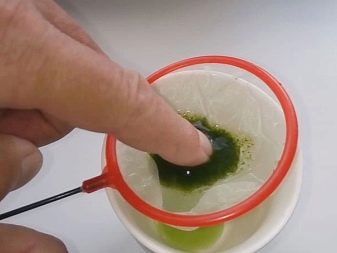All about daphnia
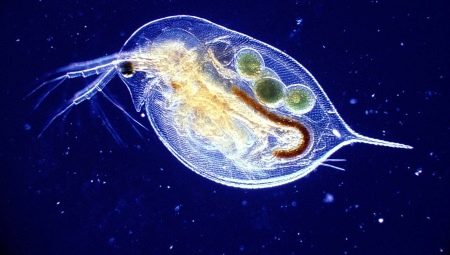
Today, modern manufacturers have tried to diversify the diet of pets as much as possible, and aquarium fish are no exception. Daphnia is considered one of the most popular live foods.

Description
Daphnia is a small crustacean with a small body size. The adult reaches a maximum of 6 mm in length. This organism is also popularly called the water flea for the races, thanks to which it can move. As a food, daphnia is suitable for many species of fish living in the aquarium.
Daphnia inhabits a variety of water bodies, from large lakes and ponds to small ditches and even a flooded track of the road. This species is often found in stagnant water reservoirs. In tropical regions, daphnia can even live on wet moss.
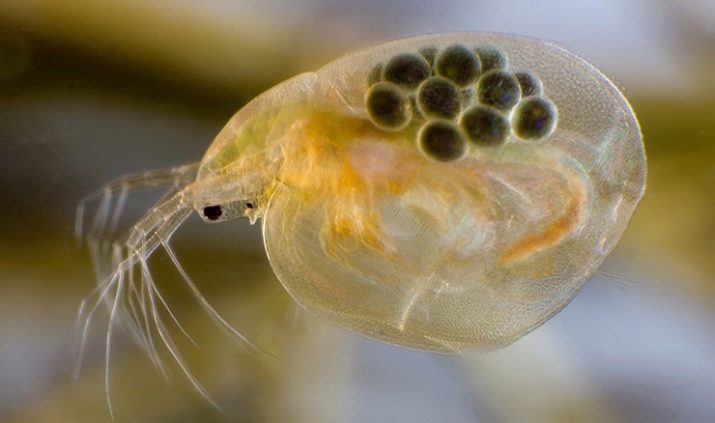
As a rule, it is located on the surface of the water or attached to aquatic plants, sometimes sinks to the bottom. It does not live in rivers and wherever water moves, because it cannot resist the current. At night it hides in deep water, and during the day it goes to the surface, where the largest concentration of its food is phytoplankton.
Daphnia's diet is based on plant foods, so it is full of algae. For this reason, this fish food is a great addition to other options. This is a high-protein product, since there are up to 50% of them in daphnia, and only 15-25% are fats.
The crustacean has a hard shell - it is not absorbed, but plays the role of a ballast that stimulates the intestines of aquarium fish. This is an excellent solution for feeding fry.
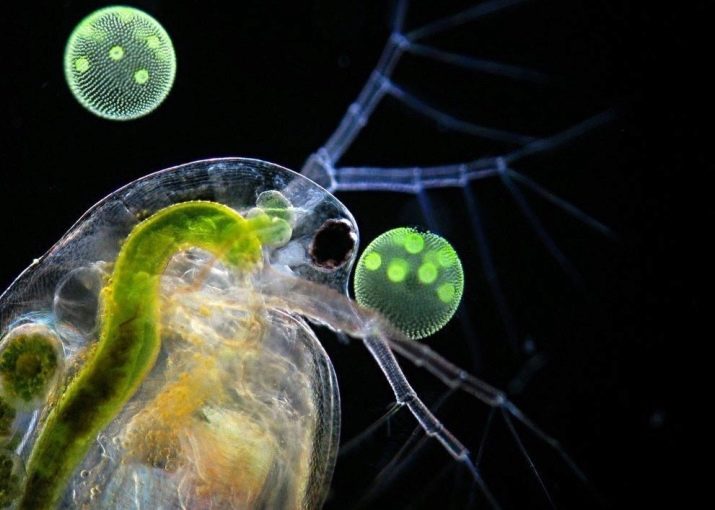
Feed overview
On special farms and even at home, daphnia can be grown together with bloodworms or pond snails. Almost all food organisms have the same composition, but the crustacean we are describing has a higher protein content among all of them.
From such food, the fish in the aquarium take amino acids, which have a positive effect on their development at a young age. With such an additive, they grow faster and feel better, however, you cannot transfer the fish only to daphnia, it is used as an additive to other types of food.

Dry
Today you can buy dry food for fry, in which daphnia is one of the components in the composition. This additive can reduce the likelihood of disease in aquarium fish. Instances, which immediately begin to give daphnia, adapt faster to a new place. This protein supplement is suitable for:
- for guppies;
- crucian carp;
- carp;
- zebrafish;
- barbs.
For aquarium fish, such nutrition plays an important role, since they are deprived of the opportunity to get everything they need in their natural environment. If we consider the biochemical composition of daphnia, then this food for aquarium fish is the most complete. It is especially important for those who regularly need plant nutrition.
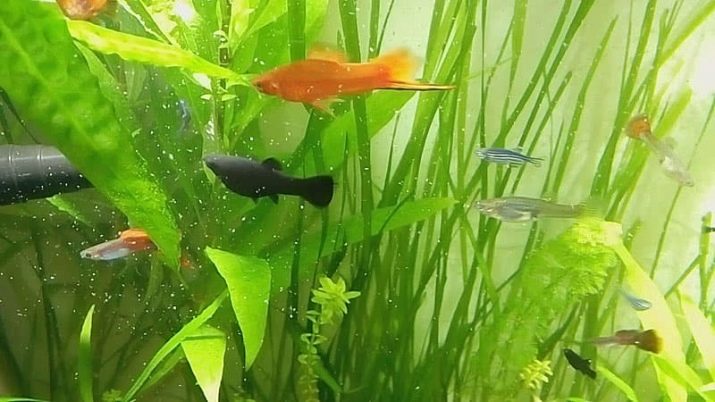
Daphnia contains components such as:
- tyrosine;
- tryptophan;
- arginine;
- histidine;
- cystine;
- methionine.

Depending on the type of daphnia, the content of proteins, fats and carbohydrates in such feed will differ. Accordingly, if it is a magna, then:
- protein - 17.6%;
- fats - 18.1%;
- carbohydrates - 33.1%.
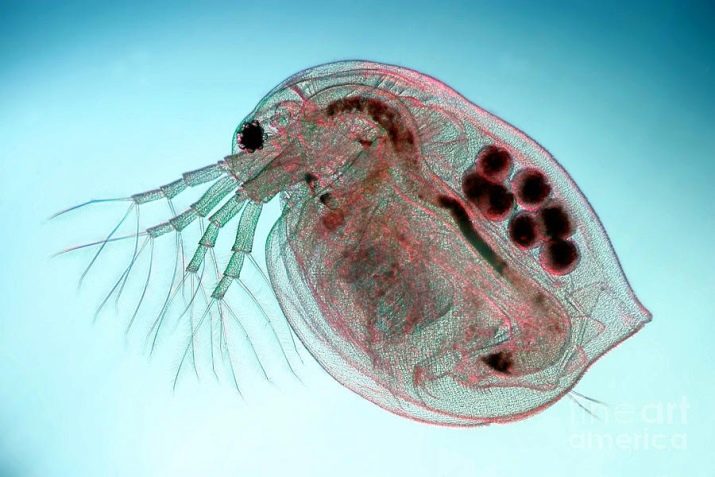
Daphnia has pulex:
- protein - 60.4%;
- fats - 21.8%;
- carbohydrates - 1.1%.

At the mine:
- protein - 70.5%;
- fats - 16.1%;
- carbohydrates - 0.
The latter dry mix is considered the most beneficial for aquarium inhabitants, since the fish cannot absorb carbohydrates. They remain in the body and are deposited in the muscles and even the liver, which over time leads to the appearance of serious diseases.
Arginine, histidine and tryptophan contained in dry daphnia are amino acids, the absence of which in the diet will lead to metabolic disorders in aquarium fish.

Frozen
Before the live daphnia is frozen, it is sorted by size. It is in this form that the feed is stored longer, retains its benefits and nutritional value as much as possible. It is worth noting that frozen food for aquarium fish began to be used back in the 50s of the last century. Since that time, the technology used has become more and more perfect.
Today we buy Daphnia in sturdy packaging for our pets. Before being frozen, crustaceans are disinfected, which helps to save the aquarium inhabitants from many problems.
To make it more convenient to use this type of feed, it is distributed in briquettes or sold in one package of 500 ml, 100 or 150 g. In specialized stores, you can find daphnia in a blister, tile, or frozen in a layer. Sometimes daphnia is mixed with another type of live food. The age restriction must be indicated on the packaging, that is, this food is suitable for fry or adults. If daphnia is intended for a herbivorous inhabitant of the aquarium, you can buy it in a composition with spirulina or even spinach, which the fish also love very much.
When preparing frozen daphnia, only live crustaceans are used, which are in a solution of potassium permanganate overnight, then put into a bag and placed in a chamber, where they undergo a deep freezing process.
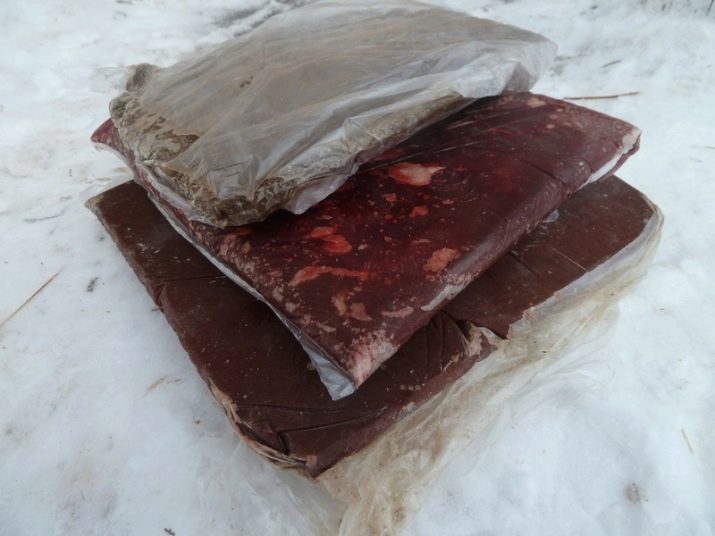
If you buy frozen daphnia, it is better to pack it, which was named "chocolate" from domestic breeders of aquarium fish. It perfectly protects the composition from air. When using a frozen product in the form of a briquette, do not defrost the whole thing at once. The necessary part is separated with a knife, the rest is put back into the refrigerator.
It is best to defrost daphnia in warm water, but not in the microwave, as it will cook there. Some fish breeders simply throw a frozen piece of food into the aquarium, where it defrosts itself over time, while remaining as fresh as possible.
The amount of feed must be correctly calculated, since its excess will invariably lead to the fact that the water becomes cloudy and deteriorates faster.
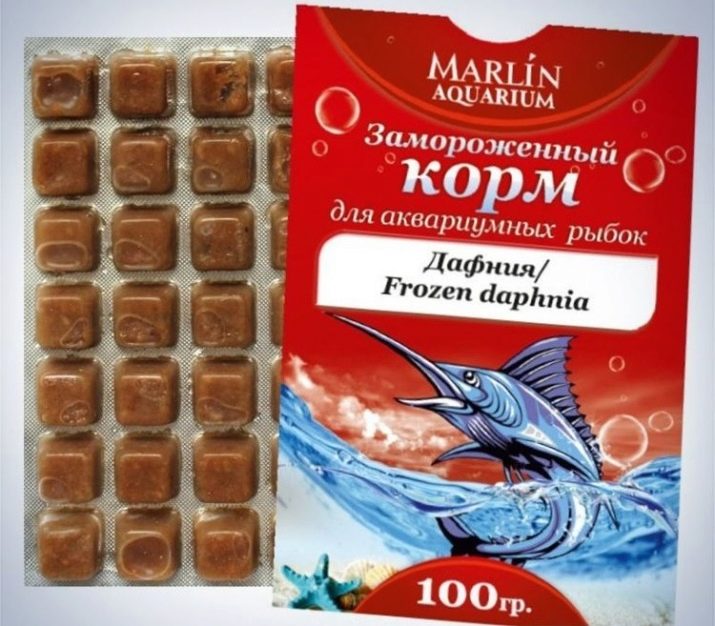
Alive
Live daphnia can be bought in a specialty store and kept in a separate container at home, feeding aquarium fish when necessary. You can try to breed crustaceans yourself at home, so you can save on the maintenance of the aquarium.
The ideal solution is a five-liter container, from which you need to cut the top. Daphnia can live in settled clean water, in which there are no nitrates, since they have a detrimental effect on the health of the crustacean.
Even a beginner will be able to breed Daphnia if he knows the technology. For this it is better to use aquariums with a capacity of 50 liters. This amount is enough for a month to feed one hundred aquarium fish.
You will need to consider the following parameters:
- dH 6-18 degrees;
- pH 7.2 to 8;
- temperature 26-29 degrees;
- the presence of weak aeration;
- the amount of light from 14 to 16 hours a day.
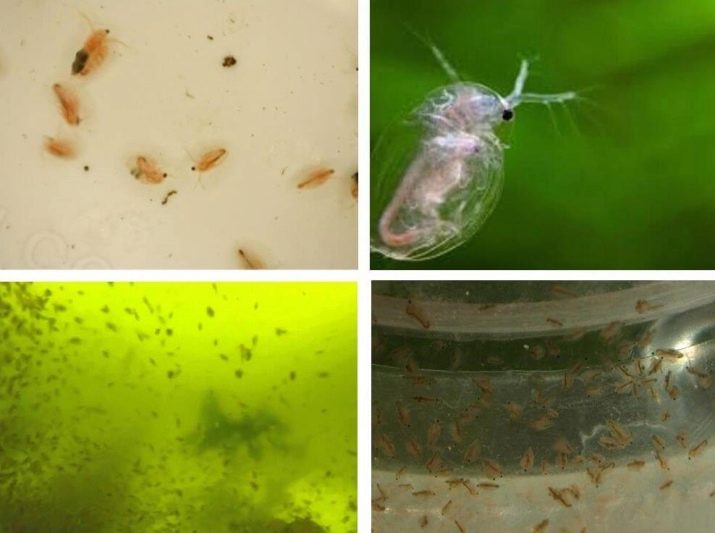
After a while, this organism, in the course of its life, will make the water dirty. The number of individuals depends on the desire of a person and the number of aquarium fish he has. The more individuals are launched into the container at the very beginning, the faster they will multiply. If there are a lot of aquarium fish, then a larger container can be used.
Yeast can be used as feed for daphnia. Both frozen and dry are suitable. Before feeding the crustacean, it is necessary to dilute them with water and let it brew a little. It is better to give a little feed than to overdo it, since daphnia can die in spoiled water. After a while, the water will become clear, when this happens, you can add more yeast.
The difference between a home-grown daphnia and one that lives and reproduces in its natural environment is the quality and variety of the forage base. The latter are much more useful for aquarium fish, but on the former, you can save a lot.
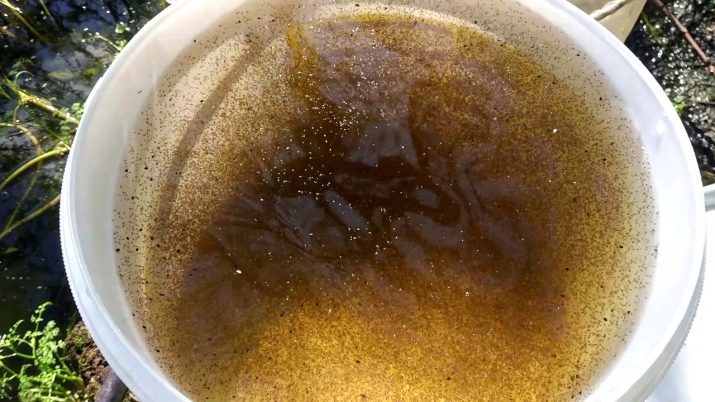
How to dilute from dry food?
There are rumors on the Internet that it is possible to breed crustaceans from dry food, since Ephippia are preserved there. There are many reviews regarding this technology, but not everyone gets it. In fact, it is possible to remove the daphnia population from dry food, and there is a very real scientific explanation for this.
During bisexual reproduction, some give birth to males, while others work to create efippial eggs. Subsequently, they need additional fertilization in order to gain development. When this process is completed, the eggs go into a special chamber, where they are protected by a chitinous membrane. Their development stops at the stage of gastrula, then sleep sets in.
It is these eggs that are capable of surviving not only deep freezing, but also prolonged drought. When they enter a favorable environment, the shell breaks, and viable embryos emerge from it.
To get young growth in this way, it is necessary to soak dry daphnia for two weeks in settled or rain water.
